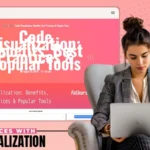Summary: In this Article, you’ll get to read about —
HR professionals should implement agile performance management to help employees and teams perform better. This framework will help them increase their skills and achieve personal and professional goals. The following guide provides an overview of this program and its benefits.
Agile Performance Management
Many organizations still conduct annual employee reviews. While these reviews are helpful, workers will improve faster with regular feedback. Agile performance management provides this feedback through continuous evaluations of employees. These evaluations help support employee growth while relying on the agile methodology, which breaks projects into small increments. The focus turns to improvement at every stage to deliver more value, and HR managers can learn how to help employees improve by taking a project management class from Agile.
Four Pillars of Agile Performance Management
Agile performance management revolves around four pillars: continuous learning, regular check-ins, trust building, and community connections in the workplace. These pillars help employees develop along with the organization. This development leads to engaged employees and less turnover, allowing organizations to increase their bottom lines while outpacing their competitors.
Regular check-ins allow managers and employees to connect and exchange ideas and information. Most HR managers find weekly or bi-weekly check-ins work best because they ensure managers know what is happening in the organization. Problems can be identified early, and solutions can be found. These meetings also foster trust between the parties.
This management approach emphasizes the importance of open lines of communication and constructive feedback to help employees develop and advance in their careers. An employee-centric culture benefits the organization.
HR managers break annual goals into small increments so employees view them as achievable. Each goal should link to the organization’s goals so employees can see how their tasks fit into the bigger picture.
Transitioning to Agile Performance Management
Employees may push back when they learn the company will move from traditional performance management to agile management. To minimize this resistance, the company should start small and limit the transition to one or two departments. It can then obtain employee feedback in those areas to learn where improvements and adjustments should be made.
Managers and employees should undergo training on agile performance management so everyone knows what to expect and how they will benefit from the move. Managers should also demonstrate the value of receiving continuous feedback and show how employees can contribute to providing this feedback. In addition, employers should provide workers with development plans, allowing them to see the opportunities that will open to them as their skills, knowledge, and experience increase.
Transparency and accountability are essential when transitioning from traditional to agile performance management. Employers should share the organizational and team Objectives and Key Results with each employee, along with their specific goals, and explain how the two relate. Furthermore, employers must have processes in place to track and evaluate progress. Agile is focused on continuous improvement to deliver more value, and these processes help the organization see where adjustments must be made.
Business owners must ensure their organizations are employee-centric, as workers look for this aspect today when applying for jobs. Without this culture, a business will have difficulty attracting and retaining top talent. Agile performance management is one way to ensure the focus is on the workers who serve as the backbone of the business. When it is, the company will thrive.



